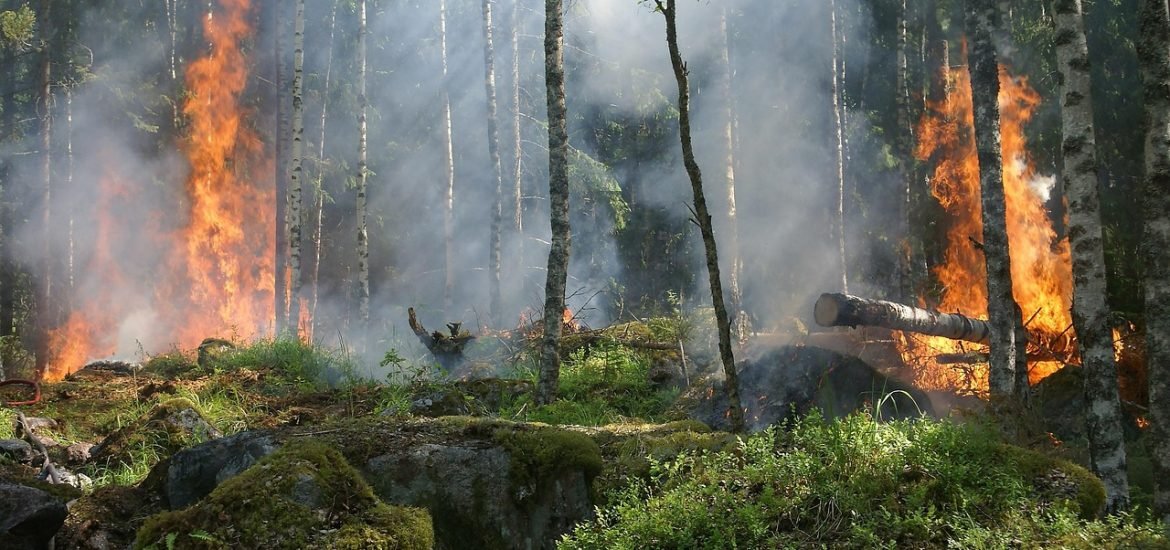
Extreme conditions, including the heat waves of the last few years, significantly increase the risk of wildfire incidents, according to a study published in the journal Communications Earth and Environment. Heatwaves lead to unseasonal drying of vegetation, bypassing natural ecological processes that limit the spread of wildfires.
A team of researchers from the University of Birmingham, UK, has been studying moisture levels in plants and soil to assess how variations can affect wildfire risk. During a three-year sampling period, the researchers measured how vegetation and soil can act as fuel in wildfires across the UK. The team also collected samples during the 2022 heatwave that resulted in unprecedented wildfires, with a 500% increase in 999 calls and 14 major incidents.
The results showed that samples taken during the 2022 heatwave differed from those collected during the previous three years. Samples of soil and vegetation collected in the last three years suggested that the moisture content of dead plants is primarily affected by weather, and summer conditions actually increase the moisture content in living plants. Soil moisture was affected by climatic and geographical conditions, including elevation and the underlying substrate rock.
However, these variations in moisture values were missing during the heatwave as the extreme heat conditions led to dry soil and dry vegetation. The authors warn that future extreme heat events will increase the risk and severity of wildfires in the UK due to this unseasonal drying effect.
“Man-made climate change is having a serious financial and ecological impact across the UK and leading to wildfires spreading in areas not traditionally at risk. Our latest study shows how extreme weather conditions, which are becoming increasingly common, are leading to heat that is overwhelming the typical ways that heathland areas protect themselves against destructive wildfires,” said Dr Katy Ivison from the University of Birmingham and first author of the study.
“The three-year survey our team conducted has found that there is a normal variation in moisture content between the three fuel sources we studied, which, by and large, balances itself out. Dead heather is affected by weather conditions during the summer, but the living heather generally tends to take on more moisture in the summer months during green up, after seeing drier conditions during the spring.”
“The extreme heat of the 2022 heatwaves, and further dry conditions in the last few years including record breaking weather in 2025, are likely to become the new normal in the UK. This extreme heat leaves the UK at much greater risk of wildfires that are a threat to human life, our homes, infrastructure, ecosystems, and their wildlife.”
Under normal conditions, live plants drying out during the spring increases the risk of wildfires during the year, while greening during the summer provides a natural mitigation against fire spread in peatlands and heathlands. However, 2022 showed that live vegetation has a limit on its ability to withstand hot conditions. In such extreme hot weather, there is an increased risk of severe wildfires spreading from one ecosystem to another due to uniform conditions in which fires can take hold.
“This is an important study to better understand how extreme weather conditions change our usual understanding of wildfire risk,” said Professor Nick Kettridge from the University of Birmingham and senior lead author of the paper. “We may be substantially underestimating the danger posed by wildfire through the summer, considering the risk to be low in areas of the country that have been historically resistant to summer fire. But heatwaves this year, as well as 2022, have demonstrated the threat we face.”
Ivison, K., Little, K., Orpin, A. et al. Unprecedented UK heatwave harmonised drivers of fuel moisture creating extreme temperate wildfire risk. Commun Earth Environ 6, 727 (2025). https://doi.org/10.1038/s43247-025-02746-8